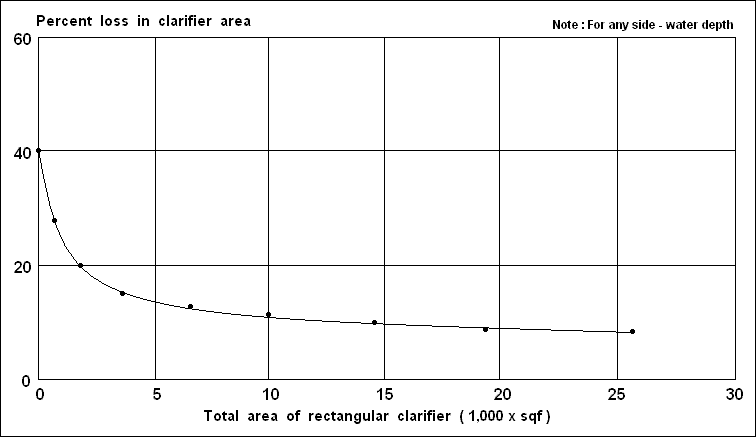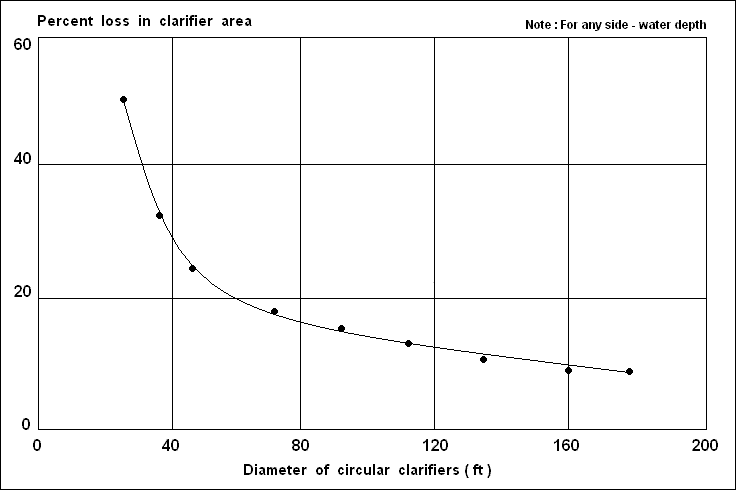( 1 ) Detention period. Detention time is commonly specified as 2.5 hours for primary tanks serving all types of plants, except when preceding an activated sludge system, where detention time is specified as 1.5 hours. Selection of optimum detention time will depend on the tank depth and the overflow rate. For those Army installations where the contributing population is largely nonresident, the detention period to be used in design of primary settling tanks is 2 hours, based on the average hourly rate for the 8-hour period when the maximum number of personnel will be contributing to sewage flow.

Figure 1. Effective surface area adjustments for inlet - outlet losses in rectangular clarifiers, L : W = 4.

Figure 2. Effective surface area adjustments for inlet - outlet losses in circular clarifiers.
( 2 ) Weir rate. The overflow loading on weirs will not exceed 5,000 gpd per lineal foot for plants designed for less than 0.1 mgd, or 10,000 gpd per lineal foot for plants designed between 0.1 and 1.0 mgd. Weir loading for plants designed for flows of more than 1.0 mgd may be higher, but must not exceed 12,000 gpd per lineal foot. When pumping is required, the pump capacity will be related to tank design to avoid excessive weir loadings.
